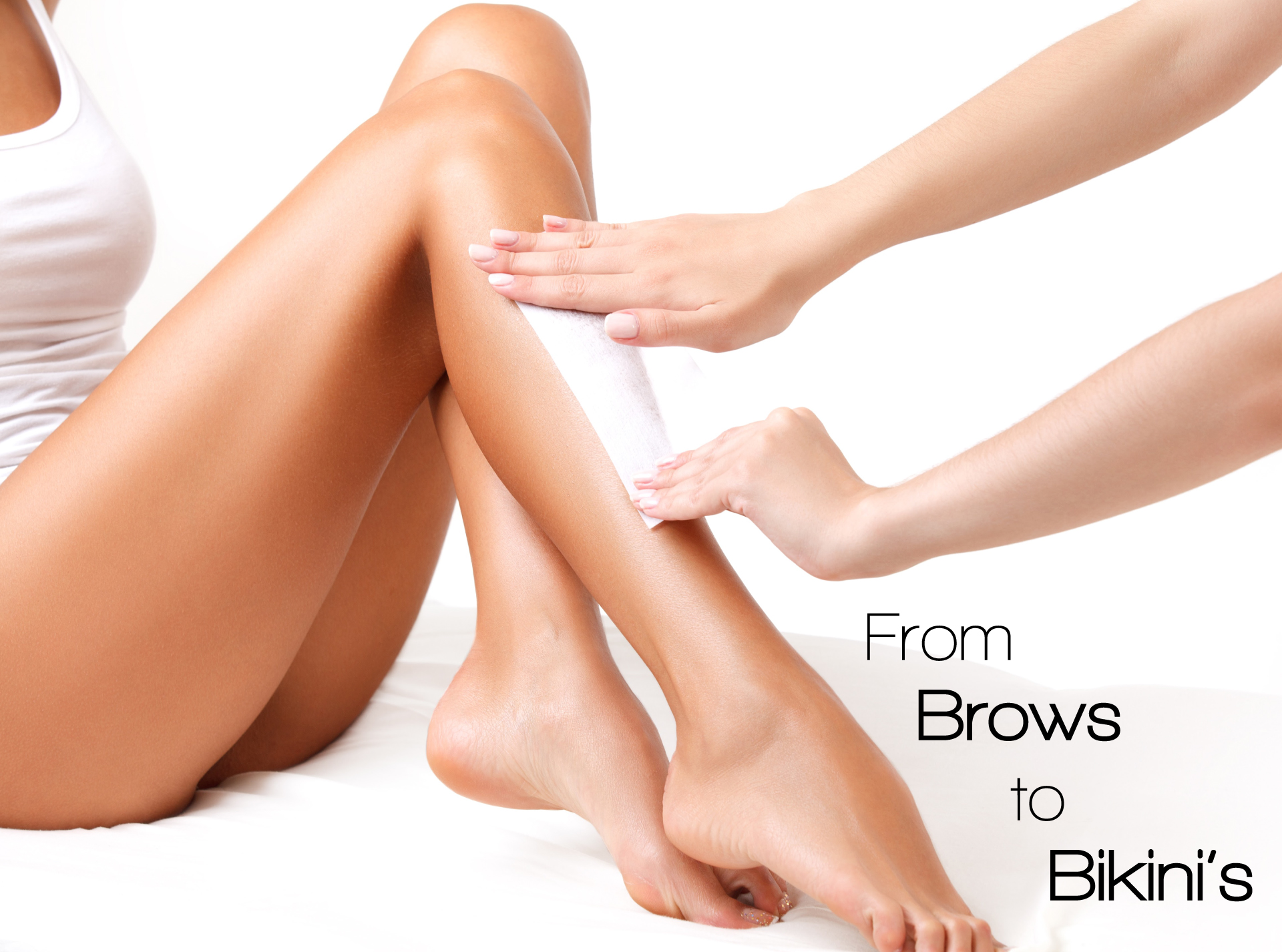
Waxing is a form of semi-permanent hair removal which removes the hair from the root. New hair will not grow back in the previously waxed area for four to six weeks, although some people will start to see regrowth in only a week due to some of their hair being on a different growth cycle. There are several types of waxing suitable for removing unwanted hair.
Strip waxing (soft wax) is accomplished by spreading a wax thinly over the skin. A cloth or paper strip is applied and pressed firmly, adhering the strip to the wax and the wax to the skin. The strip is then quickly ripped against the direction of hair growth, as parallel as possible to the skin to avoid trauma to the skin (i.e., bruising, broken capillaries, ingrown hairs caused by hair follicle trauma and lifting of skin). This removes the wax along with the hair.
Strip-less wax (as opposed to strip wax), also referred to as hard wax, is applied somewhat thickly and with no cloth or paper strips. The wax then hardens when it cools, thus allowing the easy removal by a therapist without the aid of cloths. This waxing method is very beneficial to people who have sensitive skin. Strip-less wax does not adhere to the skin as much as strip wax does, thus making it a good option for sensitive skin as finer hairs are more easily removed because the hard wax encapsulates the hair as it hardens. The strip-less waxing method can also be less painful.
The following factors are known to make those who are waxed more prone to “skin lifting,” where the top layer of skin is torn away during waxing treatment:
- Taking blood-thinning medications;
- Taking drugs for autoimmune diseases, including lupus;
- Psoriasis, eczema, or other chronic skin diseases;
- Recent sunburn;
- Recent cosmetic or reconstructive surgery in the area to be waxed
- Recent laser skin treatment;
- Severe varicose leg veins;
- Rosacea or very sensitive skin;
- History of fever blisters or cold sores (waxing can cause a flare-up);
- Using Tretinoin, Tazarotene, Adapalene, Azelex, or any other peeling agent;
- Using hydroquinone;
- Recent surgical peel, microdermabrasion or chemical peel using glycolic, alpha hydroxy, salicylic acid, or other acid-based products.
Virtually any area of the body can be waxed. The same holds true for Laser Hair removal, which is a more permanent solution to unwanted hair. We cannot shape eyebrows with Laser Hair Removal. For perfect eyebrow shaping, waxing is the preferred method of hair removal. Our estheticians are eyebrow masters!






